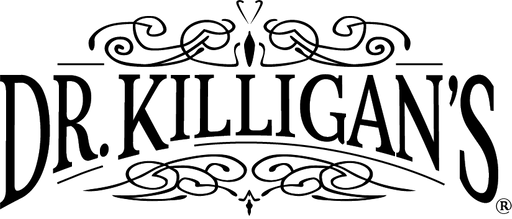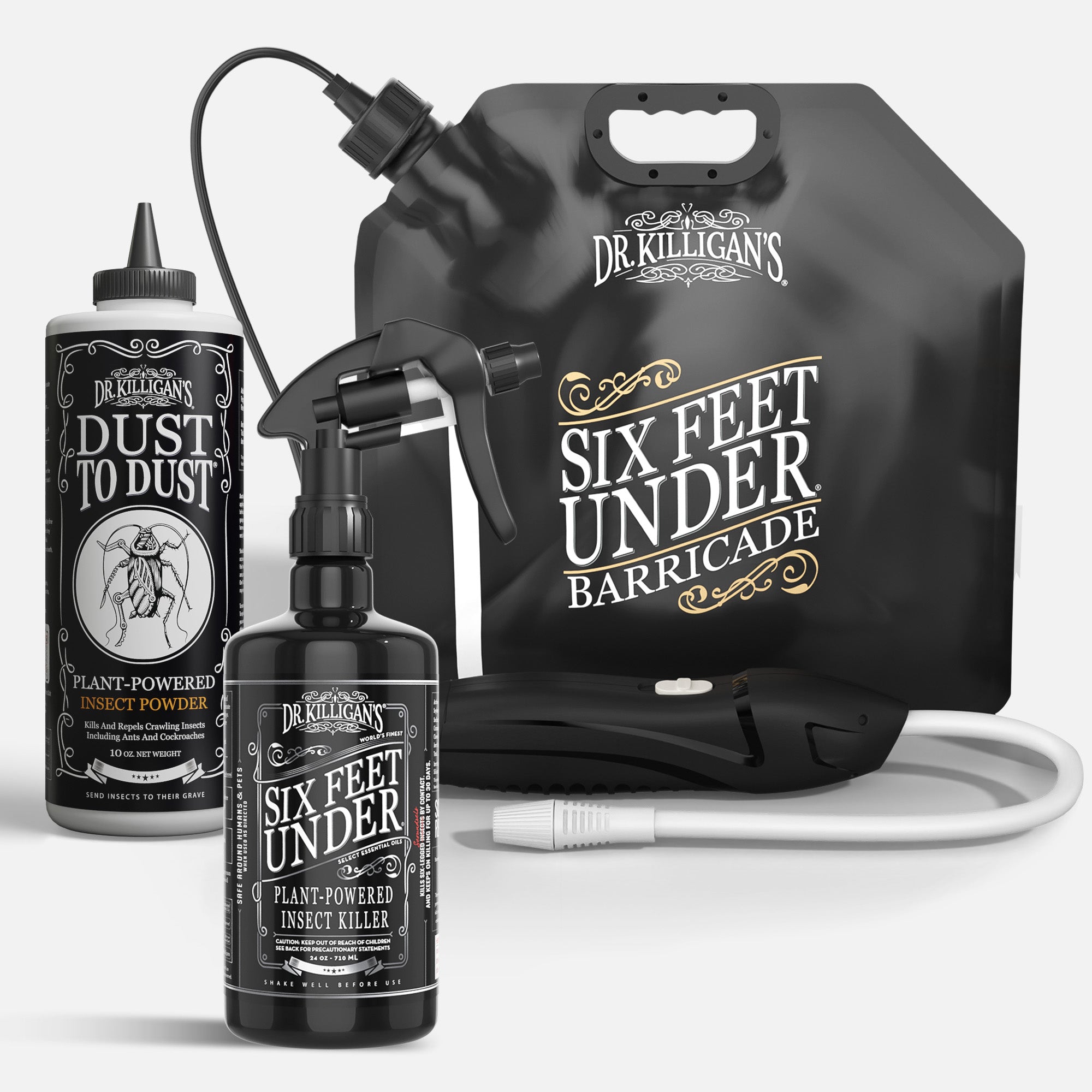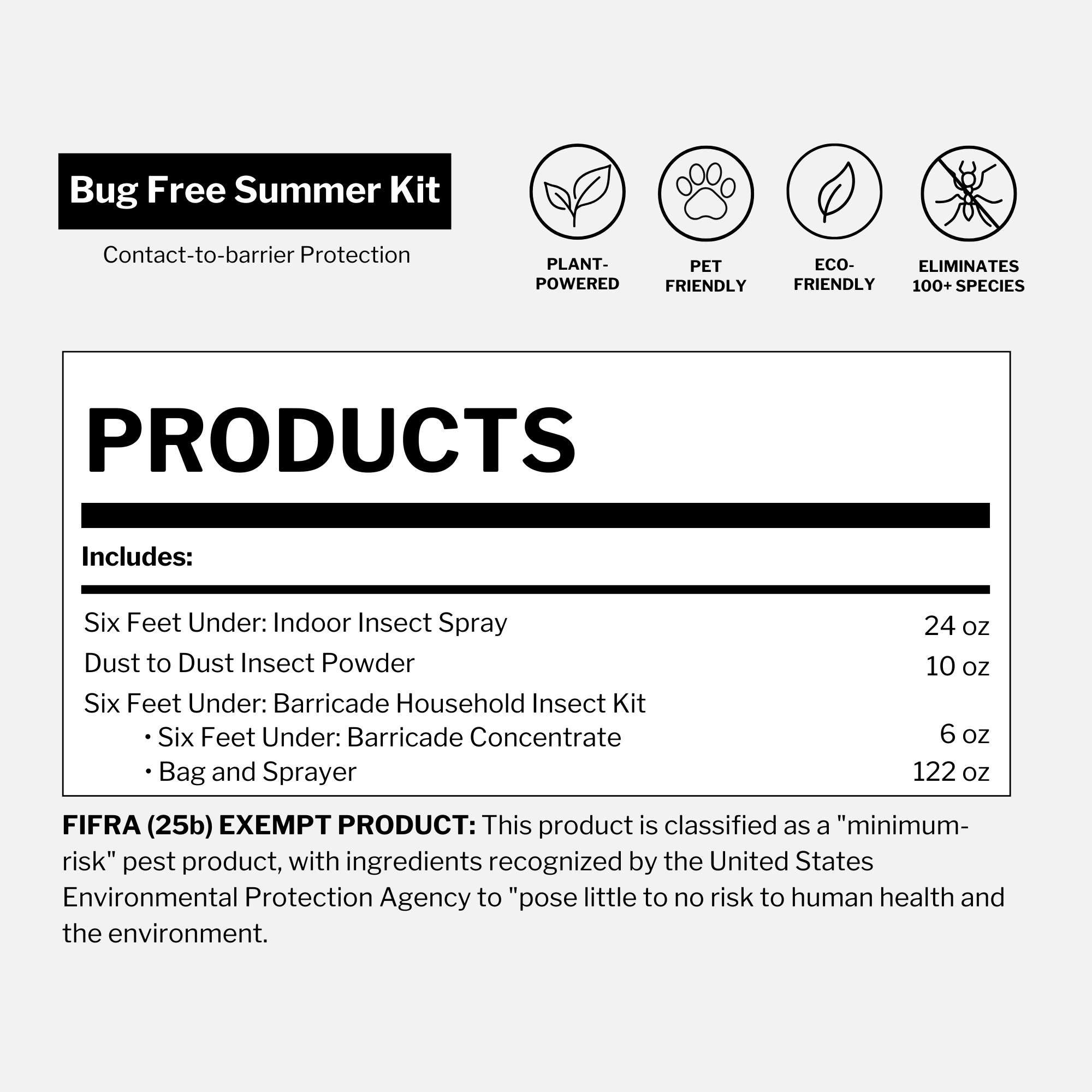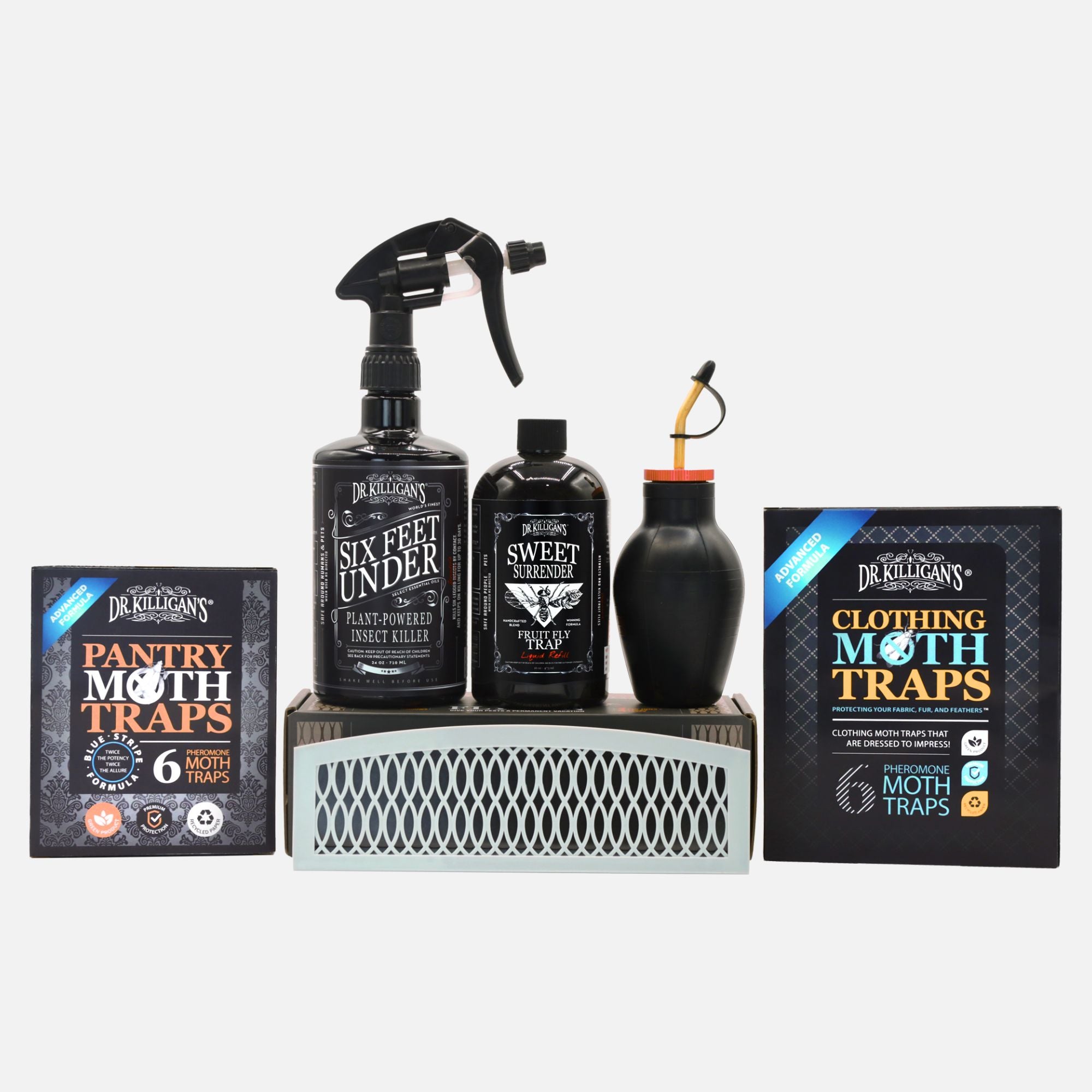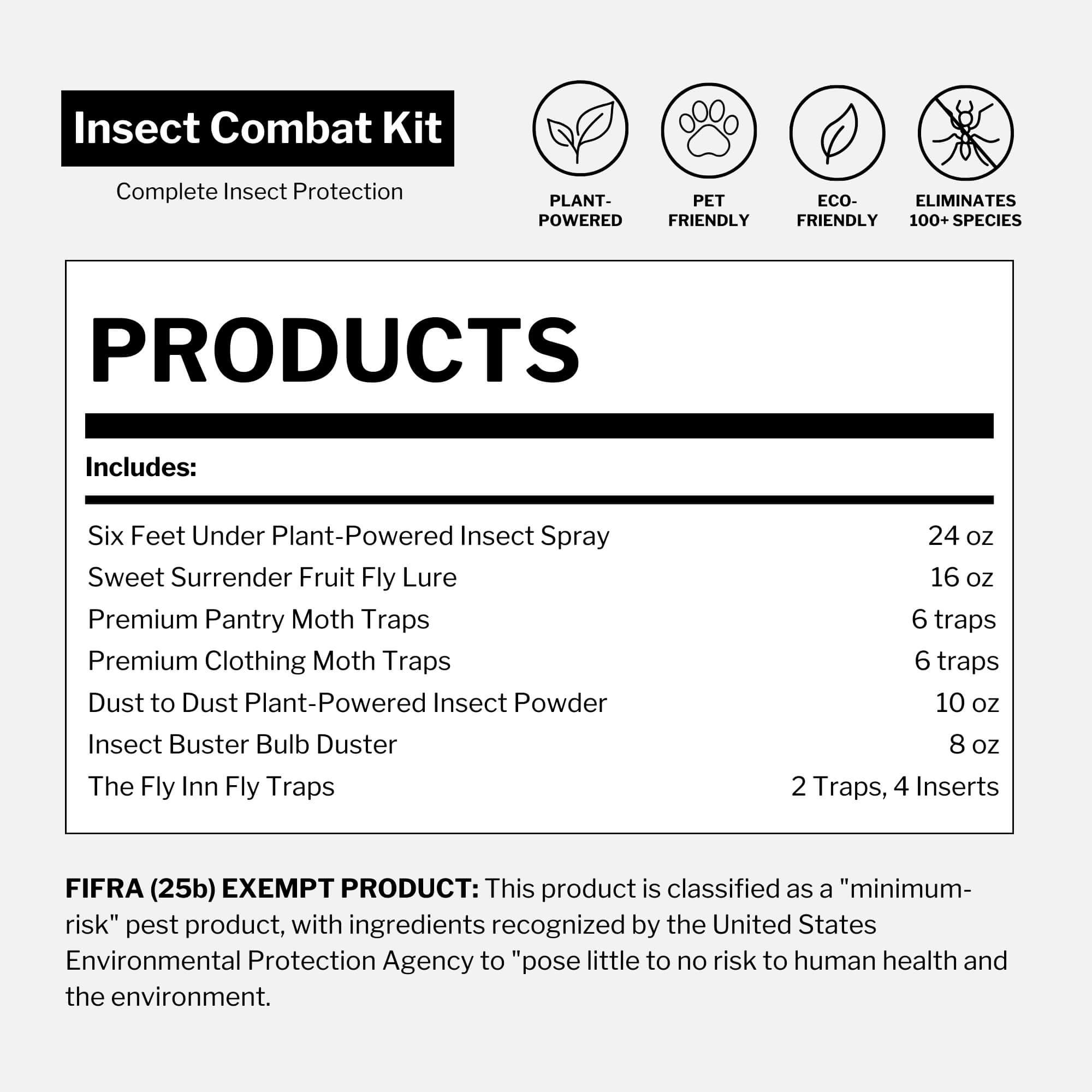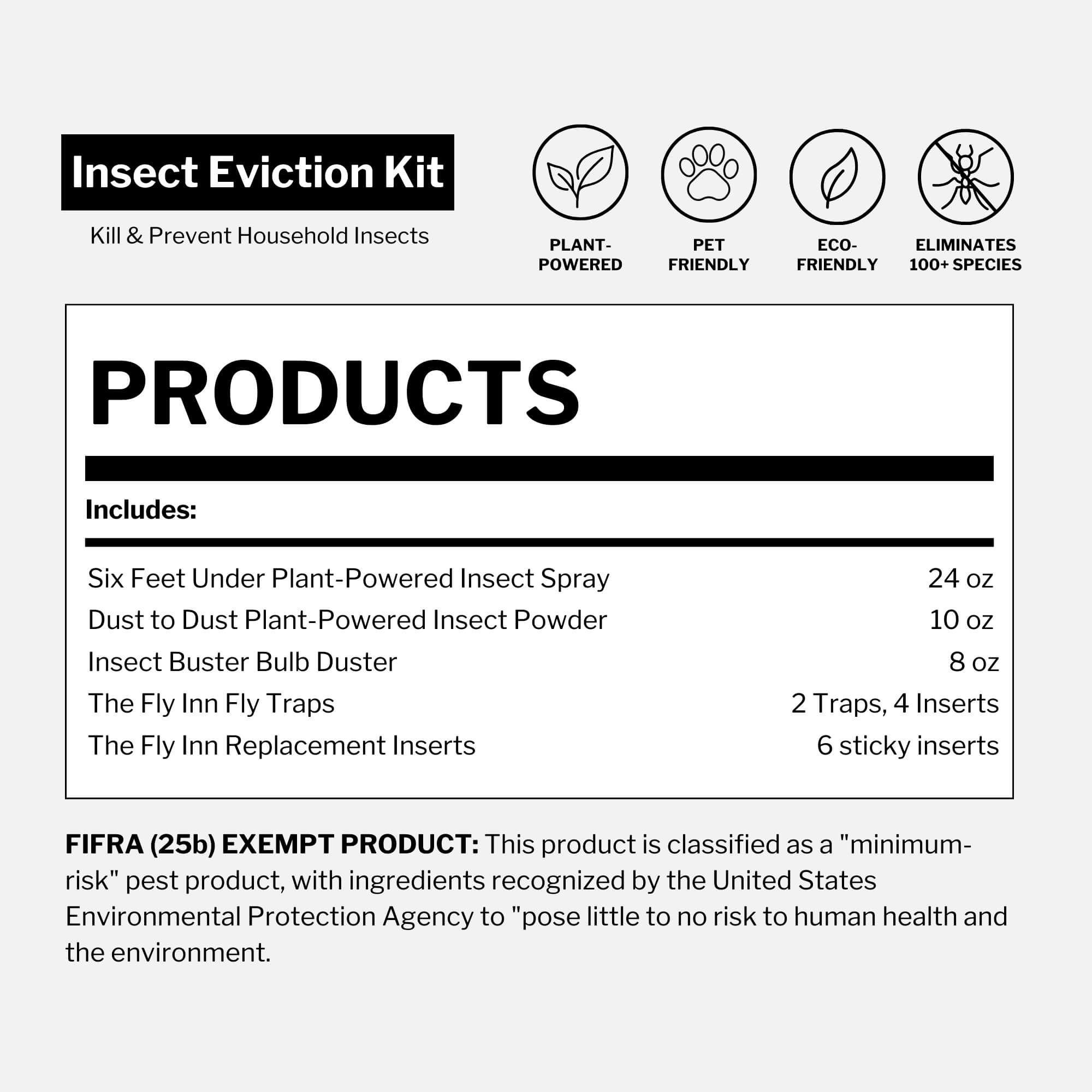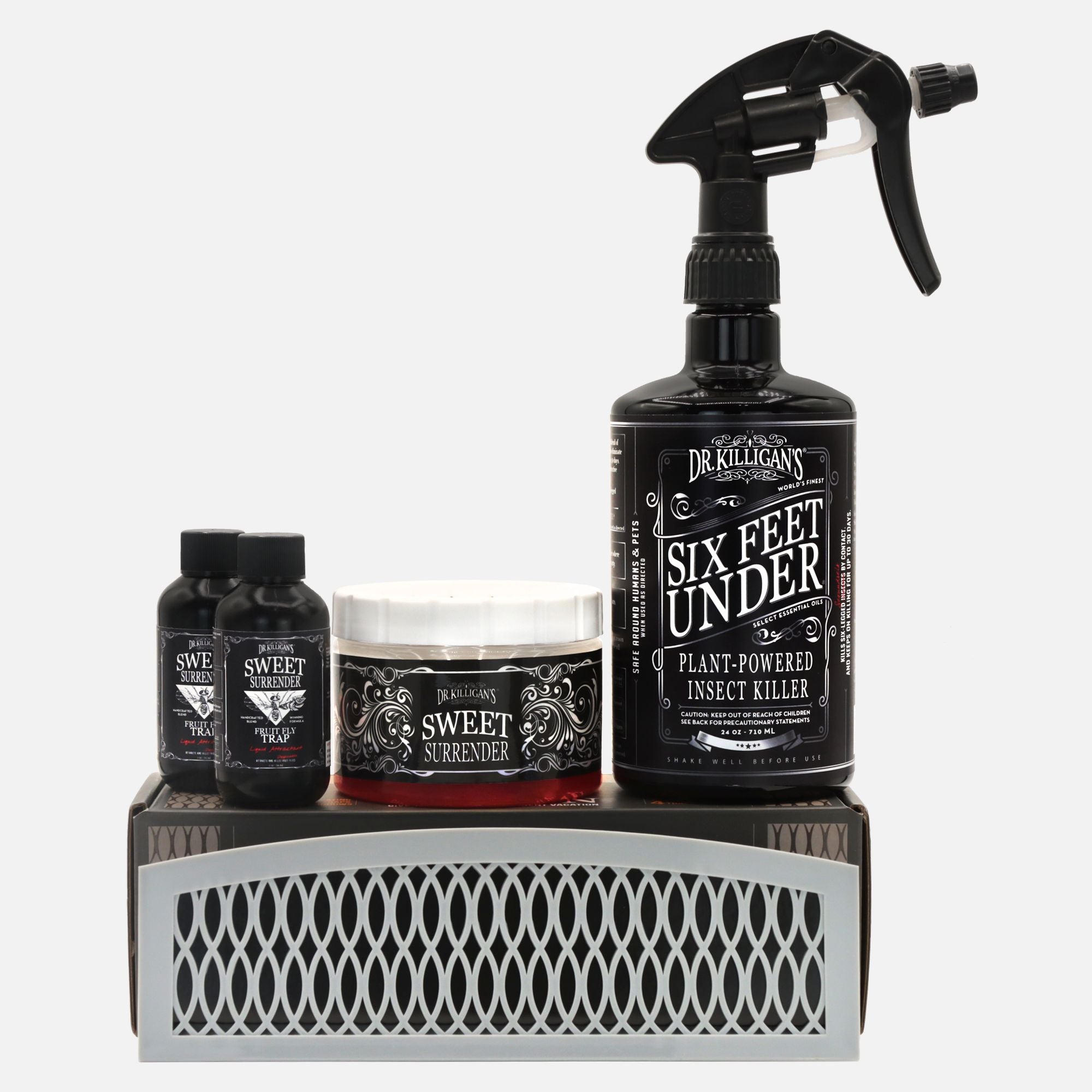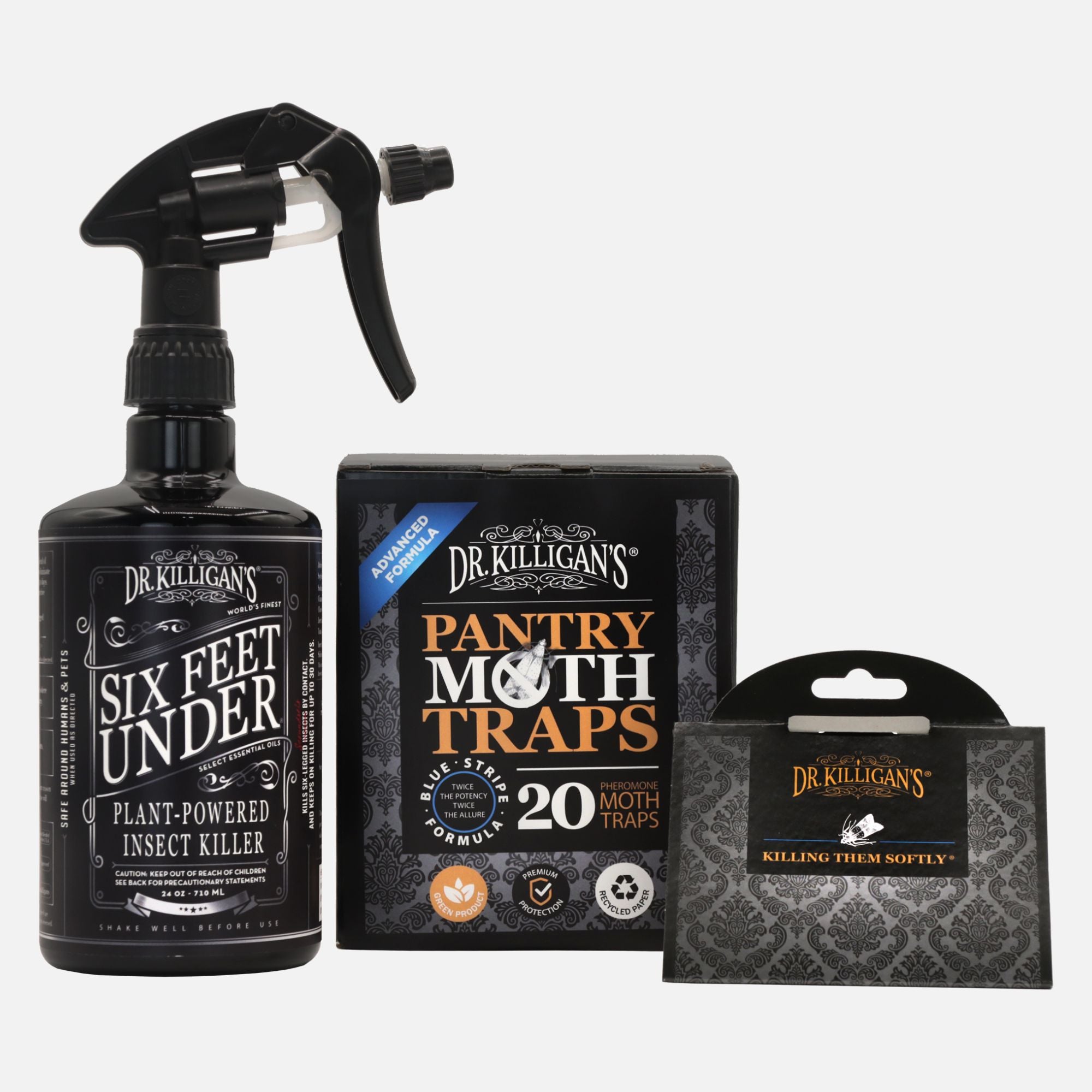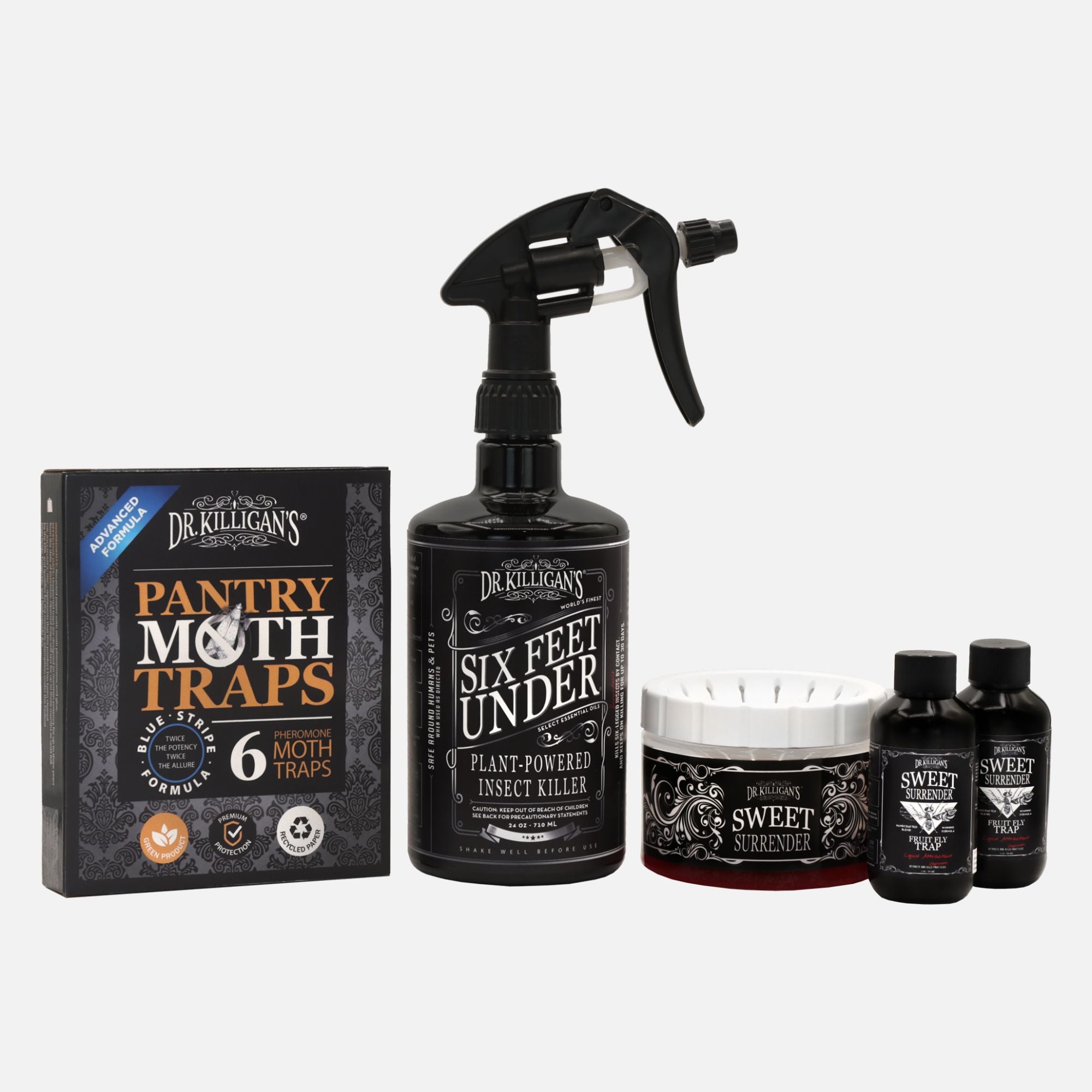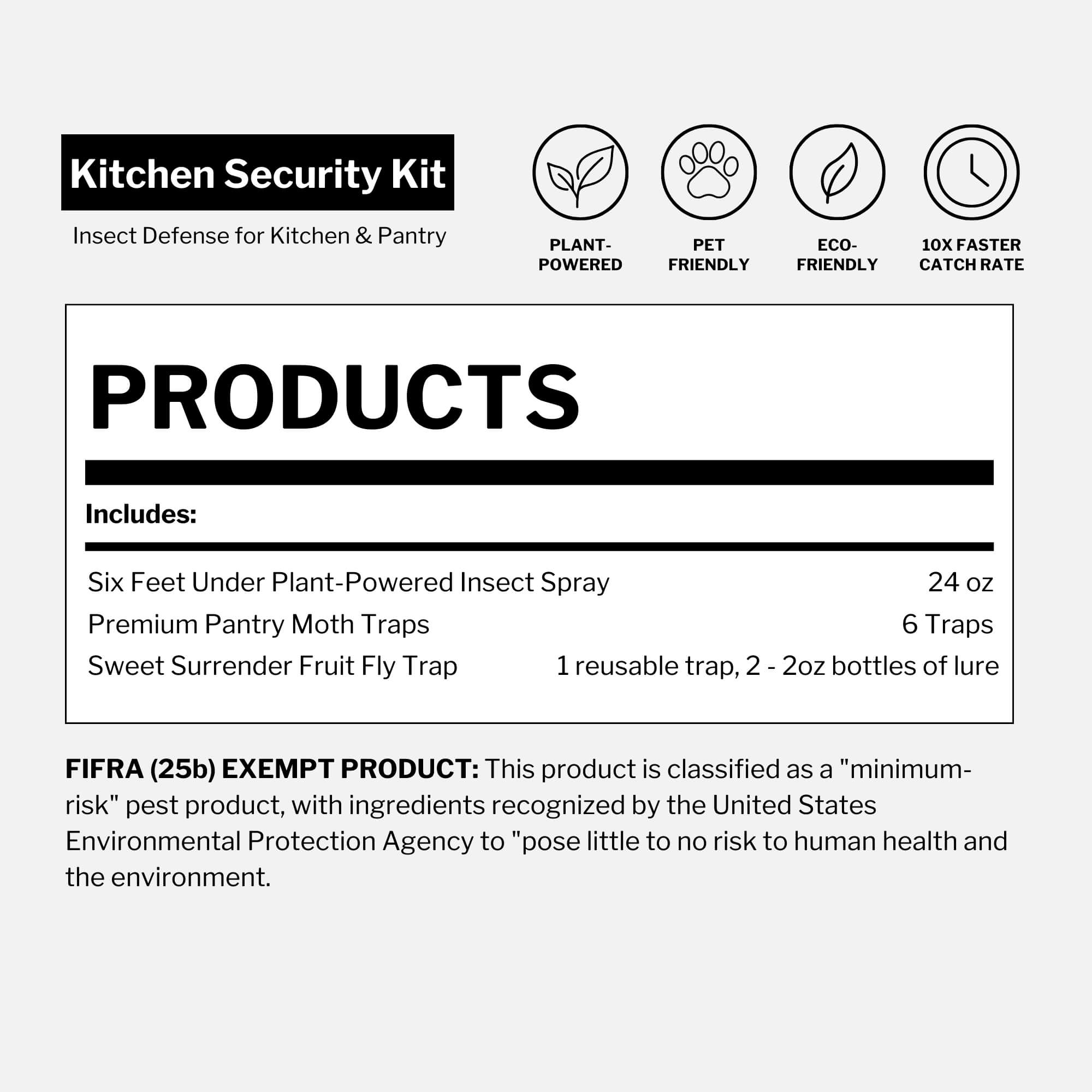Updated on June 12th, 2025
Pyrethrins and pyrethroids are two commonly used insecticides—but their similarities end there. In this article, we explore how these compounds differ in origin, effectiveness and safety, so you can make informed decisions about pest control.
What are pyrethrins?
Pyrethrins are naturally occurring insecticides extracted from chrysanthemum flowers. These plant-derived powerhouses have been used for centuries to knock out pests like fleas, flies and mosquitoes and are renowned for their effectiveness in pest control.
Wondering how pyrethrin works? It targets the insect nervous system by binding to sodium channels in nerve cells—causing overstimulation, paralysis and ultimately, death. Pyrethrins have relatively low toxicity to mammals, including humans.
You’ll find pyrethrins in flea collars, automatic misting devices, lawn-care products, carpet sprays—and even in shampoos for controlling lice and fleas, especially on pets.
What are pyrethroids?

Pyrethroids are synthetic insecticides designed to mimic the effects of pyrethrins. Unlike their botanical counterparts, pyrethroids are engineered for greater stability and longer-lasting action in both indoor and outdoor environments.
One of the most widely used pyrethroids is permethrin, found in mosquito-repellent clothing, lice treatments and military gear. Other examples include resmethrin, cypermethrin, deltamethrin, lambda-cyhalothrin, bifenthrin, cyfluthrin, esfenvalerate, allethrin and tetramethrin. Each is tailored for specific uses, from agricultural applications to household pest management.
You’ll commonly find pyrethroid sprays in foggers, aerosols, insecticide-treated bed nets and a range of household insecticides.
Pyrethrin vs permethrin: Key differences
Many people ask about permethrin in particular—how it compares to natural pyrethrin and whether it's truly a safer option. While both are used to kill insects, they differ significantly in how they’re made, how long they last and the risks they pose to people, pets and the planet. Here's a closer look at how these two compounds stack up.
Definition and source: Pyrethrin is a botanical compound from chrysanthemum flowers. Permethrin is a synthetic version designed for longer-lasting action.
Natural vs. synthetic: Pyrethrin breaks down quickly in nature, while synthetic permethrin remains active longer—especially in soil and water.
Primary uses: Pyrethrin is used in fast-acting products like foggers, sprays and shampoos. Permethrin appears in longer-lasting applications—such as treated fabrics (like mosquito-repellent gear), agricultural sprays and lice treatments.
Environmental persistence: Pyrethrin tends to break down rapidly when exposed to light, air and moisture, limiting its environmental footprint. Permethrin, by contrast, is engineered to endure, with residues persisting in soil and water for extended periods.
Human health concerns: While pyrethrins are generally low in toxicity, they can trigger allergic reactions or respiratory irritation in sensitive individuals. Permethrin’s long-lasting nature increases the risk of chronic exposure and multiple studies suggest possible links to developmental, neurological and reproductive effects—particularly in frequent-use or occupational settings.
Which are more commonly used?
Pyrethroids are more commonly used than pyrethrins, largely because of their enhanced stability and longevity.

- Stability: Pyrethroids are more resistant to environmental factors such as sunlight, heat and moisture.
- Longevity: These synthetic compounds degrade slowly, allowing them to remain active longer—reducing the need for frequent reapplication.
Together, these advantages make pyrethroids especially popular in agriculture and public health programs. Their extended effectiveness also makes them a more convenient and cost-effective choice for large-scale pest control.
Are pyrethrins safe?
Pyrethrins are plant-derived and generally considered to have low toxicity to humans and pets when used as directed. However, safety becomes more complicated when they’re paired with chemical additives designed to boost effectiveness.
One of the most commonly used of these additives is piperonyl butoxide (PBO)—a synthetic synergist that blocks detoxification enzymes in pests, making the pyrethrin more lethal.
But this enhanced potency comes at a cost. PBO’s mode of action isn’t exclusive to insects. According to the nonprofit Beyond Pesticides, it reduces the ability of humans to detoxify pesticides, raising concerns about respiratory effects and even links to cancer. Inhaling PBO can cause labored breathing and fluid accumulation in the lungs.
Adding to these concerns, a 2024 Beyond Pesticides study found PBO in 100% of hair samples from over 200 French children—alongside dozens of other pesticide biomarkers. This kind of chronic, involuntary exposure raises troubling questions about long-term effects on neurological and endocrine health.
Though PBO was long considered low-risk for humans, newer studies challenge that assumption. Research published in Chemosphere (2020) found that PBO disrupts the Sonic hedgehog (Shh) signaling pathway, essential for brain and facial development in embryos. In animal studies, in utero exposure to PBO caused craniofacial malformations and neurodevelopmental abnormalities. While human research is limited, early findings suggest a potential link between prenatal PBO exposure and developmental deficits in children.
Given these emerging concerns and PBO’s widespread use—often in higher concentrations than the active pesticide itself—I prefer to avoid formulations that rely on synthetic synergists when safer, plant-powered alternatives are available.
Note: Other commonly used synergists include sesamex and MGK-264.
Are pyrethroids safe?
Pyrethroids are used far more frequently than pyrethrins—and research is beginning to uncover the potential dangers of this widespread exposure.

A 2014 study published in Environmental Science & Technology (ACS Publications) sounded the alarm after examining 90 families in northern California, including children. The researchers found that these families—many living in homes where pyrethroids were used indoors—had significantly elevated levels of pyrethroid breakdown products in their urine. One of the most common was TCPy (trichloropyridinol), a metabolite that forms in the body after exposure to certain pyrethroid insecticides.
What’s troubling is this: Children in the study had substantially higher pyrethroid metabolite levels than the general U.S. population, based on national data from NHANES (2001–2002). This suggests a disproportionate exposure burden in residential settings—exactly where kids spend the most time.
Though often marketed as a “safer” alternative to older chemical classes like organophosphates, pyrethroids are neurotoxic, targeting the nervous system of insects—and potentially affecting developing human brains as well.
But here’s the catch: just because pyrethroids replaced something worse doesn’t make them safe.
Documented health risks linked to pyrethroid exposure

- Developmental delays in children—A study highlighted by Beyond Pesticides found that children exposed to higher levels of synthetic pyrethroids were three times as likely to experience mental delays compared to those with lower exposure levels.
- Disrupted thyroid hormone regulation—A 2020 study in The Lancet Diabetes & Endocrinology reported that prenatal pyrethroid exposure interferes with thyroid hormones, which are essential for fetal brain and nervous system development. This disruption may increase the risk of intellectual delays in infants.
- Reproductive and fertility issues—According to the National Library of Medicine, workers exposed to pyrethroids have reported lower fertility, adverse pregnancy outcomes and slower fetal growth.
- Increased risk of stillbirth—Prenatal exposure has been associated with stillbirth and small-for-gestational-age births.
- Environmental exposure disparities—A study in Environmental Health Perspectives found that people living in high-density, poorly maintained housing in NYC had disproportionately higher levels of pyrethroid residues, indicating an environmental justice concern.
Given their widespread use in homes and schools, the potential for chronic, low-level exposure—especially in children—is cause for concern.
As Youssef Oulhote, lead author of a study on pesticide exposure and children’s health, put it:
“Pyrethroids are considered less harmful than other pesticides—but that doesn't mean they're safe.”
A hidden presence in everyday products
Pyrethrins and pyrethrum are the most frequently used home and garden insecticides in the U.S.—showing up in products many people don’t think twice about, from foggers and flea treatments to automatic misting systems and yard sprays. They're widely used to control pests like mosquitoes, flies, moths, ants, fleas and lice.
Synthetic pyrethroids are just as common—and often even longer-lasting. These lab-engineered chemicals appear in products targeting cockroaches, termites, ticks, bed bugs and even scabies mites.
Despite their prevalence, many families apply these insecticides without knowing what they are, how they work or the health risks they may carry. That’s why it’s so important to take a closer look.
Why choose Dr. Killigan’s?
All of our products are pyrethrin-free and pyrethroid-free. They’re safe for your family, your pets and your peace of mind. We offer a better way to protect your home—without relying on toxic chemicals that pose risks to your health and the environment.
Yes, pyrethrins and pyrethroids kill bugs—but so do we. Only, we do it with nature-powered solutions that are just as effective and far safer for people, pets and the planet.
Here are three of our standout pest control solutions. For the full lineup, visit our shop page.

Dr. Killigan’s plant-powered pest control
Six Feet Under Plant-Powered Insect Spray kills more than 60 insect species on contact and keeps working for up to 30 days. Powered by cinnamon and clove essential oils, it’s your go-to defense at entry points, baseboards and other high-traffic areas.
Pantry Moth Traps and Clothing Moth Traps outsmart moths with our exclusive blue stripe glue board and double-strength pheromone blend. Safe, effective and trusted in food storage areas and closets.
Six Feet Under: Barricade Household Insect Kit offers long-term protection where you need it most. This plant-powered barrier kills on contact and keeps killing for up to 90 days—without synthetic residues. Apply it around the perimeter of your home for proactive, lasting defense.
Don’t trade one danger for another. Choose Dr. Killigan’s for solutions that are effective, safe (when used as directed) and rooted in nature.
